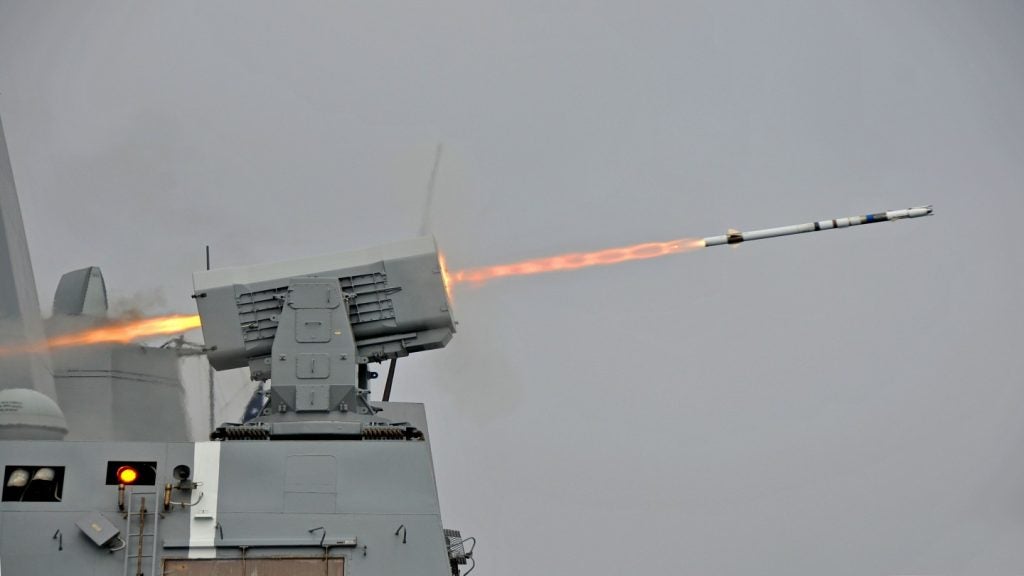Testing Jetpacks: UK Marines Future Mobility
At the forefront of innovation, an eye-opening display by the UK marines garnered international attention last week across technology and defence industries alike. In a video released by tech-firm Gravity Industries, a jetpack operator is seen completing a maritime boarding operation with the UK Royal Marines in the latest trial of the new technology. Through the use of a jetpack, the video shows a pilot lift-off from a moving rigid inflatable boat and fly over the sea to reach the larger target vessel – the Royal Navy’s HMS Tamar in this case – before releasing a ladder overboard to the awaiting powerboat below.
The jetpack itself is known as the ‘Jet Suit’, developed by British firm Gravity Industries. Recording speeds of up to 80mph with a jet engine power of more than 1,000bhp, the jetpack can reportedly reach altitudes of 12,000 feet. Founder of Gravity Industries and former reservist of the Royal Marines Richard Browning has trialled the jetpack with the UK military in the past, previously testing the use of the Jet Suit by Assault Teams with the Royal Navy last year and testing rapid service support with the Royal Artillery.
Victoria Bosomworth, associate aerospace and defence analyst at GlobalData comments: “Although the British Navy has stated the jetpacks are not currently in use with the Royal Marines and are very much still in the trial phase, integration of the technology into the UK’s arsenal could prove advantageous in many respects. In comparison to conventional maritime boarding operations, usually through fast-roping from a helicopter, jetpack technology potentially provides a stealthier and more mobile alternative for Marines, particularly as the technology advances and becomes increasingly streamlined. If proven successful in meeting necessary criteria, one of the long-term benefits jetpacks could provide is possible cost-saving within the Navy, reducing expenses in terms of infrastructure and maintenance as well as leading to potentially fewer rotorcraft procurements in the future.”
Britain is not the only nation to recognise the potential of this new technology, with other nations seeking to test the British-made Jet Suit. Gravity Industries trialled the technology in conjunction with the Netherlands Maritime Special Operations Force, completing boarding and self-ExFil missions in April 2021. The US has also recently been researching the practicalities of jetpacks for military use, with the US Defence Advanced Research Projects Agency (DARPA) conducting jetpack feasibility studies since March. Aside from the potential of its tactical capabilities, the Jet Suit has also been tested in search-and-rescue missions for hikers atop UK mountains with the Great North Air Ambulance Service (GNAAS), demonstrating its altitude capabilities.
Bosomworth continues: “While the jetpack technology shows significant promise for defence applications, there are, however, a number of complications that need to be overcome before the technology is ready for deployment. One glaring issue is that of targeting – the jetpack operator is highly vulnerable as a target in its present form, whom critics have pointed out is even more at risk due to flammable jet fuel. This lack of protection is further reinforced by weight restrictions, decreasing the amount of body armour and weaponry a soldier is able to carry. Compounding the problem, weight restrictions also influence the amount of fuel capacity the jetpack can hold, impacting the flight time, which at present is estimated between 5-10 minutes.”
A distinct obstacle regarding the jetpack’s enabling technologies in the past has been issues surrounding software stabilisation and flight control. Developments in drone technology have assisted in resolving this problem, however, one of the main remaining hurdles stems from the jetpack’s propulsion technology. At present, jetpacks are powered by jet engines (or ‘propulsion assemblies’, as in the case of the Jet Suit), which make use of zero-bypass ratios to produce the thrust that powers the jetpack. This system, however, leads to high levels of fuel consumption on top of the already limited carrying capacity of the jetpacks. A possible solution to this may be a switch over to electric power, although electric propulsion at present is not a feasible alternative due to the current energy limitations of batteries. In order for the technology to mature, substantial investment in electric power may be required, although, with renewed global military interest, advancements in this field may be forthcoming in the near future.
How well do you really know your competitors?
Access the most comprehensive Company Profiles on the market, powered by GlobalData. Save hours of research. Gain competitive edge.

Thank you!
Your download email will arrive shortly
Not ready to buy yet? Download a free sample
We are confident about the unique quality of our Company Profiles. However, we want you to make the most beneficial decision for your business, so we offer a free sample that you can download by submitting the below form
By GlobalDataDespite some of the challenges that the jetpack technology presents, with each successive trial of these jetpacks, the once sci-fi notion of flying capabilities within defence is increasingly becoming more fact than fiction. Although the integration of jetpacks into the armed forces is still some time away, this innovative technological advancement may not only provide militaries with upgraded tactical capabilities but also prove to be a more cost-effective model in the long term.









